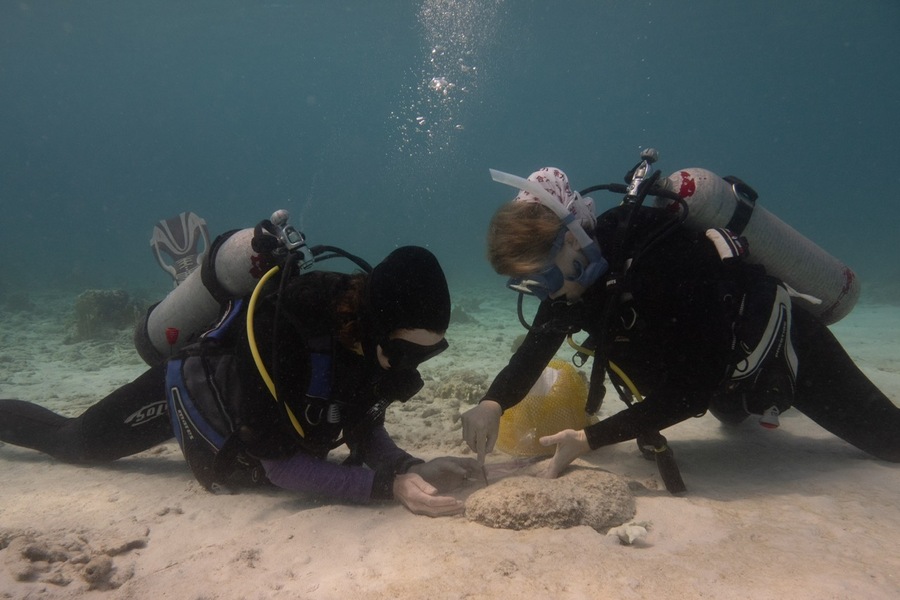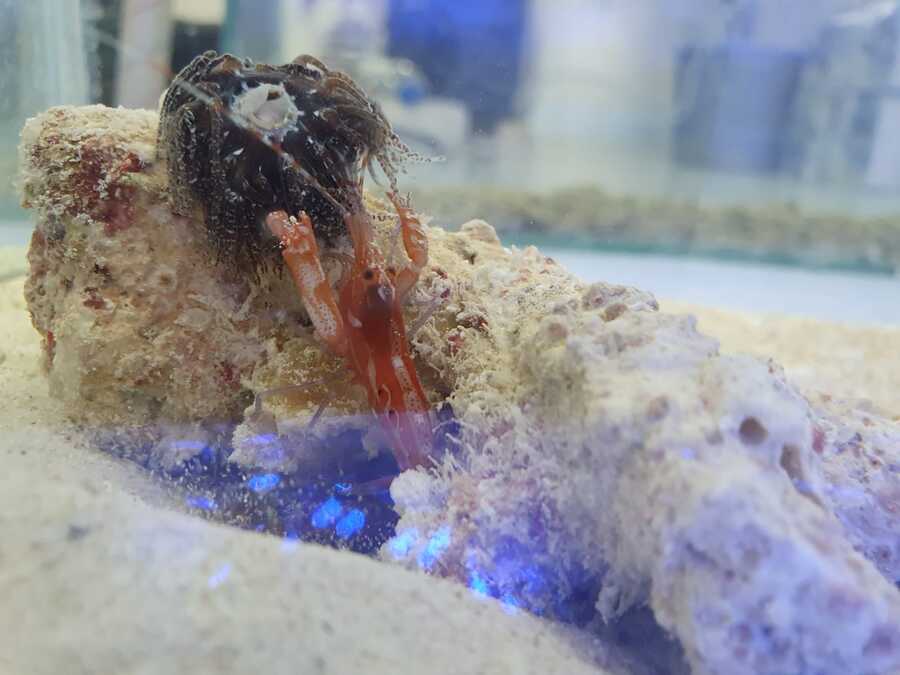Carla Hurt

Carla Hurt, associate professor of biology at Tennessee Tech University, has been busy working “under the sea” for Disney. However instead of mermaids, she has been tracking Alpheus armatus, also known as the “pistol shrimp,” for a documentary through National Geographic. Though only two inches long on average, the shrimp can make enough noise to disrupt sonar scans.
“I was doing some work on a National Science Foundation grant on biodiversity in Guam, and someone from Wildstar Films contacted us because he’d read an article we’d published about the diversity in the Alpheusgenus,” explained Hurt. “He initially asked if we had any recommendations for a species to feature in a documentary about ‘underdogs’ in the aquatic world.”
Hurt wholeheartedly recommended the pistol shrimp. This particular crustacean has one average-size claw and one enlarged claw, from which it gets its name. When the pistol shrimp snaps this claw closed, it shoots a bullet of energy that reaches up to 56 miles per hour. When it hits its prey, it stuns it long enough for the pistol shrimp to make it a meal.
“The snap is like a small explosion. You can actually see a little flash of light,” Hurt said. “This snap of the claw has been studied by physicists, as it is the fastest known underwater acceleration of any body movement. Researchers first studied snapping shrimp in World War II because the sound of the snap was so loud that it interfered with sonar.”
In addition to catching prey, the large claw is also used for communicating with others,
and possibly has a role in mating as well. These shrimp live in male-female pairs
on one species of sea anemone and defend their home against predators. “They will actually pick up the anemone and move it around, and even groom and clean
it. They take care of their house,” Hurt said.
“They will actually pick up the anemone and move it around, and even groom and clean
it. They take care of their house,” Hurt said.
While working with the film crew for the documentary, she spent a week in the waters around Curaçao with her collaborator from Seattle University, Kristin Hultgren. Though they won’t appear on screen, they worked behind-the-scenes to help Wildstar Films with the logistics of finding filming sites for the crew and helped them collect live specimens to use in an aquarium.
Hurt also collected specimens for her own research, to investigate the genetics of color vision in this species. She also brought back a sample of the large claw and is working with the iMaker space on Tech’s campus to get an enlarged 3D image of exactly what makes the pistol shrimp’s snapping mechanism work. Byron “Andy” Pardue, senior lecturer of mechanical engineering at Tech, and recent Tech graduate, Katie Torrance, are also working to produce a 3D animated claw which will be featured in the documentary.
“These shrimp have very complex and interesting life histories and behaviors,” Hurt said. “It has been fun to contribute to a project that will bring awareness of biodiversity to a wider audience.”
The documentary, which has not yet been officially named, has an expected release date of 2024 on Disney+.

